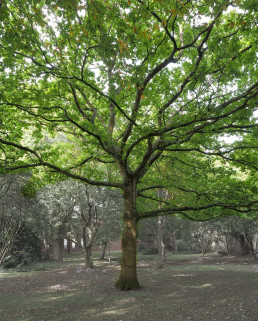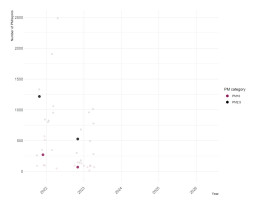The Witness Tree Project | The Witness Trees | Quercus robur
Quercus robur, or Common or English oak is a species native to Ireland, holding an important cultural value as it is associated with pre-christian druid rituals, kingship, and divinities, and also often present in folktales. Its durable hard wood has been widely used over the centuries from buildings and ship-building to barrel- and furniture-making. Its bark is still used to this day in heritage crafts such as for tanning leather and making black dye [1]. The English oaks even found uses in traditional farming, in a practice known as ‘pannage’: the release of livestock pigs in oak woods to feed on fallen acorns [2]. It is a species of least concern for conservation globally, but a decreasing population has been observed [3]. It is also a widely researched species globally, with more than 400 of its features being studied, as retrieved from relevant databases. The tree at the garden has an individual value in our collection, as a fine specimen tree.
1. MacCoitir, N. 2003. Irish Trees: Myths, Legends & Folklore. Gill & Macmillan Ltd. ISBN 1848890885, 9781848890886
2. POWO (2022). “Plants of the World Online. Facilitated by the Royal Botanic Gardens, Kew. Published on the Internet; http://www.plantsoftheworldonline.org/ Retrieved 27 July 2022.”
3. Barstow, M. & Khela, S. 2017. Quercus robur. The IUCN Red List of Threatened Species 2017: e.T63532A3126467. https://dx.doi.org/10.2305/IUCN.UK.2017-3.RLTS.T63532A3126467.en. Accessed on 25 April 2023.





